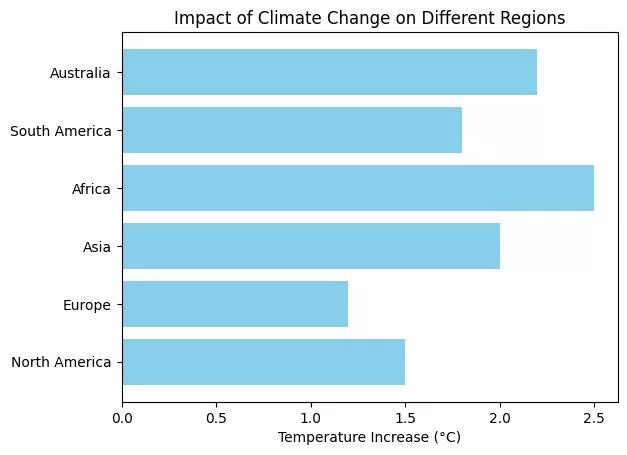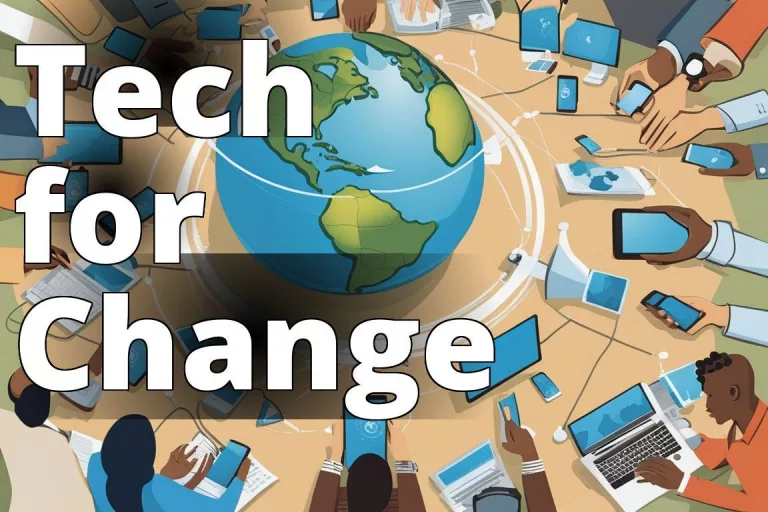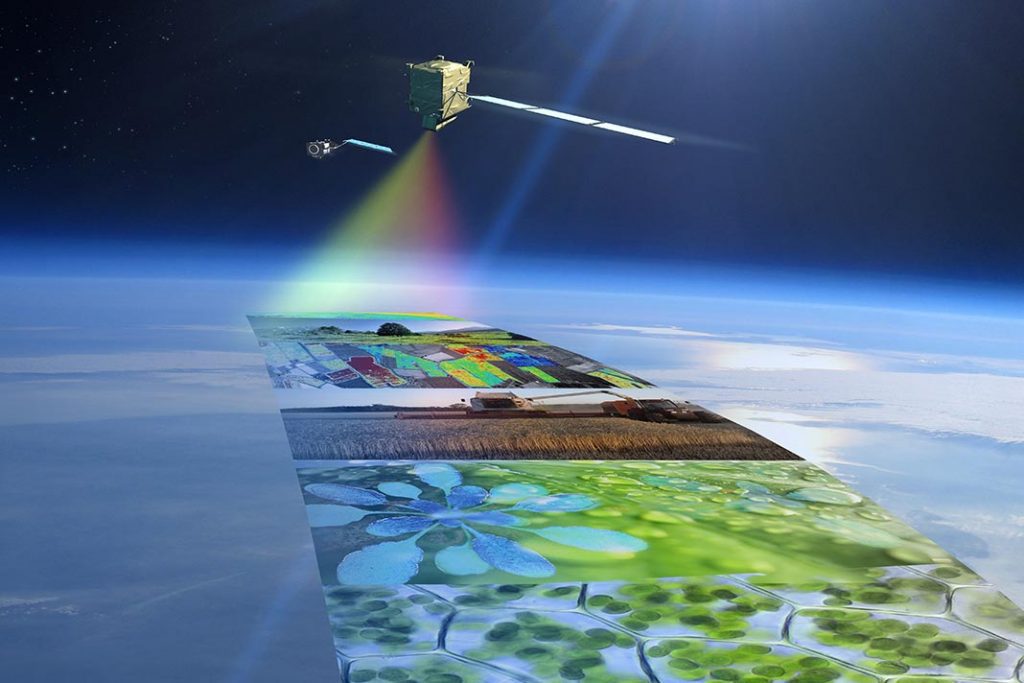Climate change is a pressing issue that requires effective communication to raise awareness and drive action. Various technologies, including social media, artificial intelligence (AI), machine learning, virtual reality (VR), and mobile apps, can significantly enhance climate change communication.
Social Media: A Powerful Tool for Climate Awareness
Social media platforms like Facebook, Twitter, Instagram, and TikTok have become crucial channels for climate change communication. They stimulate environmental movements by efficiently spreading information to mass audiences and raising public awareness and understanding of environmental issues.
Specifically, Twitter provides an important platform for the everyday discussion and debate around climate change. The use of hashtags allows climate conversations to spread rapidly. Social media enables climate scientists, environmentalists, activists and NGOs to widely share their latest research, insights, and calls to action with both text and visuals both text and visuals.
However, while viral social media campaigns can reach large audiences extremely quickly, they may not necessarily translate into significant real-world actions. More research is needed to understand how to convert online engagement into offline impact.
AI and Machine Learning: Unraveling the Complexity of Climate Change
AI and machine learning are extremely useful technologies for accelerating solutions to address climate change. They can rapidly analyze vast troves of climate-related data from sensors, satellites, and scientific measurements – far beyond human capacity to process manually. Machine learning algorithms can also detect subtle patterns and trends.
AI models can create various types of climate change forecasts and predictions 5 – from future temperature rises to extreme weather events. These can inform policy decisions and adaptation strategies. In addition, AI chatbots and digital assistants, built ethically, could allow users to interrogate climate change evidence and scenarios in conversational formats that feel more personalized, relatable, and accessible 6.
However, the use of AI in climate change communication faces challenges. For instance, early AI chatbots generate some nonfactual answers and cite fake sources, indicating issues to improve 6. Climate change is also an extremely complex area with inherent uncertainties. AI models with biases could potentially steer climate conversations in misleading directions.
Virtual Reality: Immersive Education on Climate Change
Virtual reality (VR) applications have demonstrated promising early results for communicating climate change information and showcasing solutions, while enhancing pro-environmental behaviors.
VR can vividly simulate future climate change scenarios – from rising sea levels flooding cities to extreme droughts causing famines. These immersive visualizations can trigger emotional reactions, bringing often invisible long-term climate risks psychologically closer. This leads to better public understanding of the severe consequences of insufficient climate action today 7.
Studies have found VR climate education experiences to be most impactful when incorporating realistic environments, body movement, and specific calls for climate policy changes 7 8. However, more randomized controlled trials are required to compare VR’s efficacy to traditional media and fully understand its strengths and limitations for climate communication.
Mobile Apps: Personalized Climate Change Information
Mobile apps represent another potent technology for enhancing climate change communication through personalized information and suggested actions. For example, eco-friendly mobile apps can provide users hyperlocal air pollution data, daily carbon footprint tracking, or alerts on extreme weather events in their area – along with steps they can take to reduce emissions 9.
Gamified climate apps can also incentivize real-world sustainable behaviors like public transport usage and low-carbon diets. However, more research is essential to measure if such apps drive long-term significant behavior change or mainly engage those already aware and concerned about climate change. Understanding differential impacts across geographic and demographic groups could optimize apps as climate communication tools.
In conclusion, while these technologies offer promising avenues for enhancing climate change communication, technology alone cannot solve the climate crisis. It must couple with multi-dimensional strategies – from effective policies, education, and public campaigns to community organizing and individual lifestyle changes. With holistic collaborative efforts, impactful climate communication can help spur society towards decisive and sufficient decarbonization action during this critical window of time.

Best-Practice Communication Techniques
Communicating about climate change impacts effectively requires a strategic approach that takes into account the complexity of the issue and the diverse audiences involved. Here are some best practice communication techniques:
- Frame Climate as a Public Health Issue: Emphasize the near-term health benefits of climate-change mitigation measures. For example, everyone will breathe cleaner, healthier air as we transition away from fossil fuels.
- Co-create with Your Audience: Don’t assume you know what your audience needs and wants. Do your research and keep testing and iterating as you go along.
- Pick a Trusted Messenger: People’s values and identities affect who they trust and how they make choices. So take some time to figure out who the community puts its trust in.
- Focus on Belonging and Empowerment: Show people both reasons to be hopeful and how to channel their feelings into action.
- Make it Visual: Pictures and videos induce stronger emotional responses than words alone, priming people to act. Visual imagery also helps our brains understand abstract and complex associations, like those between climate and health.
- Use Appropriate Language, Metaphor, and Analogy: Communicate climate change in a way that resonates with your audience specifically. Find out what they need to make a personal connection with climate change and motivate them to take action.
- Tell a Story: Stories can help make the abstract concept of climate change more tangible and relatable. They can also evoke emotions that can drive people to take action.
- Use Clear and Concise Language: One of the most essential strategies for communicating climate change is to use clear and concise language.
- Promote Civic Engagement and Dialogue at the Grassroots Level: Discussion, education, and action on climate change are necessary at all levels of society. We need to create opportunities for people to share their experiences, ideas, and concerns about climate change and to work together to find solutions.
- Adapt Strategies Based on Responses: A climate campaign targeting young adults might evolve based on their engagement patterns. Adapting strategies based on responses ensures communication remains relevant and impactful.
Remember, there is no “one-size-fits-all” approach to the challenges of communicating about climate change. Each of the many challenges presents a new opportunity to improve the way we present climate change.
Engaging Youth in Climate Action Using Digital Platforms
Engaging youth in climate action through the use of communication technologies is a multifaceted approach that involves education, empowerment, and the use of digital platforms. Here are some strategies:
- Educate through Social Media: Many teens learn about climate change through social media platforms like YouTube and Facebook. These platforms can be used to share information, raise awareness, and inspire action. However, it’s important to teach media literacy to help young people discern credible sources and avoid misinformation.
- Empower through Digital Platforms: Platforms like Youth4Climate allow young people to submit ideas on how to tackle climate change. This not only gives them a voice but also encourages them to think critically about solutions.
- Promote Active Participation: Encourage youth to become active agents of change. This can be done by developing youth-government partnerships and setting up coaching programs in leadership and project management.
- Use Art and Entertainment: Art-based and entertainment approaches can help communicate about climate change and raise awareness. This can include digital art, music, videos, blogs, podcasts, and online writing.
- Leverage AI and Machine Learning: Artificial intelligence and machine learning can be used to analyze data and predict the impacts of climate change. This can help young people understand the complexity of the issue and explore potential outcomes.
- Encourage Activism on Social Media: Social media platforms can be used to organize protests, share news and updates about campaigns, promote sustainable practices, and engage with supporters.
- Promote Interdisciplinary Learning: Encourage educational opportunities that take young people out of the classroom and help facilitate climate engagements. This can include workshops that enable students to think about climate change beyond scientific knowledge and technological solutions.
Remember, the goal is not just to inform, but to inspire action. By giving young people the tools and platforms to engage with the issue of climate change, we can empower them to become part of the solution.
Future Trends and Innovations
The future of climate action is being shaped by a range of innovative technologies. These technologies are not only helping to reduce greenhouse gas emissions but are also providing new ways to adapt to and mitigate the impacts of climate change. Here are some of the key trends and innovations:
- Renewable Energy Technologies: Innovations in solar, wind, and hydroelectric power are making renewable energy more efficient and practical. These technologies are becoming cheaper and more accessible, making them a viable alternative to fossil fuels.
- Carbon Capture, Utilization, and Storage (CCUS): CCUS technologies capture carbon dioxide emissions from sources like power plants and industrial processes, preventing them from entering the atmosphere. The captured carbon can then be stored underground or used to create valuable products.
- Artificial Intelligence and Machine Learning: AI and machine learning are being used to analyze vast amounts of climate-related data, helping scientists and policymakers understand and address climate change. These technologies can also be used to create forecasts and predict the impacts of climate change.
- Sustainable Agriculture and Land Management: Climate-smart agriculture and sustainable land and water management practices are being developed to reduce emissions and make food production more resilient to climate change.
- Green Construction: Innovations in green construction are reducing the environmental impact of buildings, which account for a significant portion of global emissions.
- Battery Technology: Advances in battery technology are making electric vehicles and renewable energy storage more efficient and affordable. This is crucial for the transition to a clean energy future.
- Smart Technologies: Smart homes, buildings, cities, and grids are using technology to improve energy efficiency and reduce emissions. This includes everything from smart thermostats to advanced energy management systems.
- Biochar and Biofuels: Biochar, a type of charcoal used as a soil amendment, and biofuels, made from organic materials, are emerging technologies that can help reduce greenhouse gas emissions.
- Circular Economy: The circular economy model, which focuses on reducing waste and making the most of resources, is being increasingly adopted in various industries.
- Fusion Energy: Fusion energy, a form of nuclear energy that could provide a virtually limitless source of clean power, is a promising future technology.
These trends and innovations are just the tip of the iceberg. As the urgency to address climate change grows, we can expect to see even more exciting developments in climate technology in the future.
Next Steps
Round Table Environmental Informatics (RTEI) is a consulting firm that helps our clients to leverage digital technologies for environmental analytics. We offer free consultations to discuss how we at RTEI can help you.


